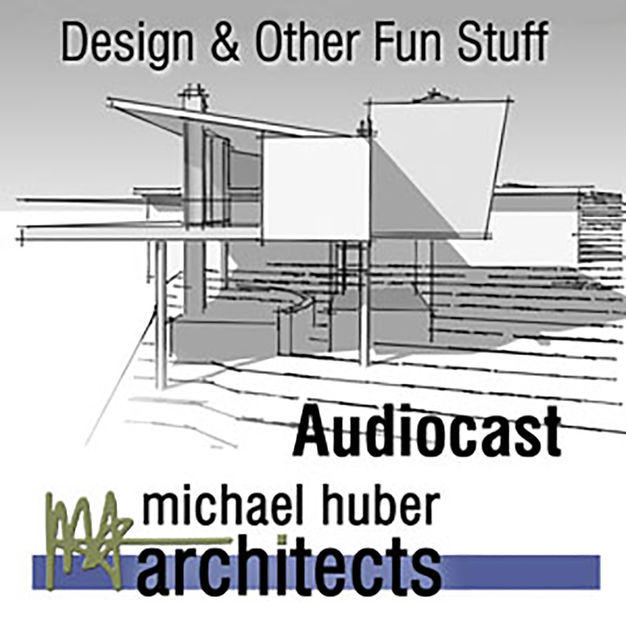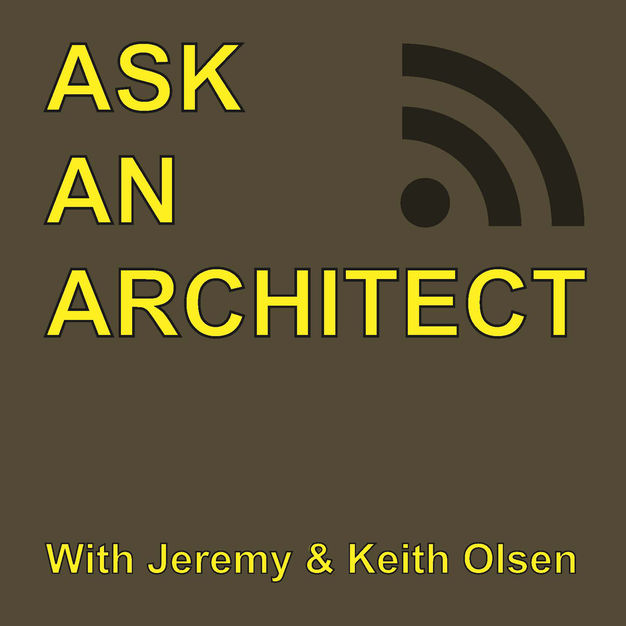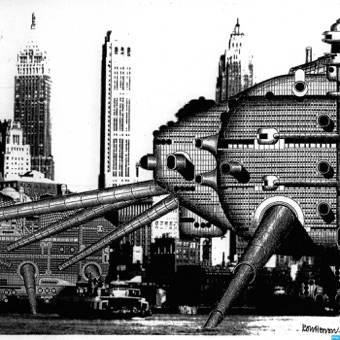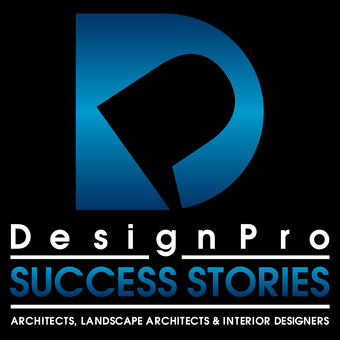
Whitewash Studio Architecture Podcast
T. Marc Sawyer, AIA: Architect and Design Professional
Architecture and Design, Taking your project to the next level.
- 1 minute 33 secondsThe importance of Architectural Style
I used to have this idea that style was not that important. That we have the ability as Architects to create within a lot of different styles and a huge range of design capabilities. But the more I progress through my career the more I realize that I might have been wrong. Your style is possibly more important than I thought. And we need to produce great work for our clients from your inner creativity.
Can you get to that point of creating great work without Focus? Probably not you need to sit down and create and the more you create. The more you will create your own personal style. What it is that makes your designs unique. You know, what is it that makes them part of who you are providing value to the world. When you create your generating something from an idea, and eventually your Creations are going to evolve into your own unique style and your style will develop over time.
You have to create multiple, you know structures before you’ll be able to consider something to be your particular style. You get a create and create and create. The more you continue to create your style is going to develop and become your own. This is where I was lost for a lot of years. I still haven’t really fully developed a style. But I now recognize this as being something very important.
What do you want to explore further? Think about how you can contribute to that and your style will develop from that repeated exercise.
23 February 2020, 6:00 am - 3 minutes 8 secondsExcitement and long projects
Do you ever just get bored after a while of working on a project for so long? You know, how do you keep the excitement level up? Yes. I do get bored. I get to the point where I’m just wanting to speed things up to finish but things take time. You probably have felt the same way. Your projects seem to just kind of drag on for a really long time.
But all you see is this little progress. Or worse you have a project that has stalled and the contractor is barely showing up to finish or maybe he has walked away for some reason or another or the one that goes and then stalls and will eventually pick back up and continue again. Those are the hardest for me.
You have all this momentum at the start. And then you kind of like stall or drags out and you start to lose that direction or that drive to keep it and make it make the project move forward. It’s just been so long. It takes forever to finish and there’s so many changes and it’s just to the point where you feel like the owners kind of given up as well, but they appear to be kind of pressing on and what is it?
Is it just the amount of time that it takes every project is like this? Most likely it’s not. Things can be quick. Then sometimes things can drag on when you provided all the information owner and they’re like sitting on it almost like they’re kind of scared to make that next decision and respond to what it is you provided.
Like they don’t care they going to move forward with the project is the is a entire project worth doing. I mean what’s happening? And these are scary moments for Architects what you have to realize is that for the most part this renovation or the new home? It’s not their primary job and they have a full-time work load.
They have families. They have children. They need to help with schoolwork and after school and these are all the things that they’ve got on their plate. Right and for the most part you’re kind of flexible and you’re able to slide things around but you need to consistently push things forward and it starts to fade away the project if they’re not entirely focused and extremely motivated it can sometimes.
They can be lags for like months in between getting feedback and stuff, and then they’ll be Panic will set in and they’ll start to question where they are and why things have moved forward. Really in the design process this boils down to you. This is why you can’t wait and sit back and just wait for the project to get to that point.
16 February 2020, 6:00 am - 2 minutes 8 secondsAre you doing work you care about?
All right. So are you doing work that you care about. I mean, are you doing work that fulfills you. Things that lift you up? Are you focused on a cause that you can feel like you can stand behind? I haven’t found mine. At least. I don’t think I have I’m still kind of searching for that thing that greater purpose the one that I can stand behind something that I really truly believe in. It’s kind of hard to admit that I haven’t found that purpose yet.
But I don’t want to mislead you and I’ve never been that involved in like movements. I kind of stay out of them. I don’t really know. But I haven’t found any one thing that I particularly identify with. Something that speaks to me and have you found your thing? Do you know what it is that you’re focused on?
Is it something you’ve created or something that you’re joining in on that someone else has created? I’d like to know what that is. What you’re putting your efforts towards as an architect what you’re putting your efforts behind as an architect. And what is it that you’re doing in for who? I’m just really curious.
Please. Let me know and I feel kind of. A little bit lost at the moment which direction I plan on going in and I have this desire to get behind some kind of movement. But at the same time I’m kind of lost I don’t really know what that could be. I don’t really want to volunteer for groups or organizations.
I’ve always dedicated my time to my home and my family and what we need. People out there that are making real change that are not only speaking about change, but they’re actually creating things with their actions. You know, that’s that’s what it takes to have a movement in the first place. Words placed into action.
9 February 2020, 6:00 am - 1 minute 23 secondsBecause you want to.
There’s nothing wrong with doing something just because you want to. Or wanting to try something new that might conflict with what you told yourself you were.
We want new challenges. We get bored with the world we’re in if it’s stagnant. When we reach that feeling we need to shift to avoid burnout.
To take a break from the work we’re doing. Focus on something else. Even a short distraction can be beneficial. But depending on your level of burnout you might need something much longer. Some shift in your environment to create that process of recovery.
The thing is, you might not realize you’re at a point of needing that shift. That break.
We get in a rhythm. If you’re trying to build your architecture firm you know it’s a lot of long hours and takes a lot of dedication. But at some point it hits you. You feel like you just can’t put much more in. You need to step away.
Something’s not working.
We all get this feeling and you need to listen to it. You need to find some separation. Take a breather. See if you can focus on something different. Spend some time outside. Take in some other activity.
This will allow your mind, which might be obsessing at this point, to take a breather. It will allow it to open up. Just stepping away can offer new insights into what is was you were struggling with.
Take a step back and you’ll find what it is you’re struggling to see.
2 February 2020, 6:00 am - 1 minute 42 secondsProcess
Is your process written down and is it fluid? We should always be refining our process for creating and designing architecture.
In order to create a process. One that allows you and your clients to have the most success with each and every project. You need to have it written down.
What are the steps you go through on a project? What’s the path you take? This might sound odd if you’ve never thought about your process. But it’s something every designer should go through.
Write down your processes.
View this post on InstagramA post shared by Marc Sawyer (@wwsarchitecture) on Jan 26, 2020 at 3:32am PST
Have you ever had complications come up? Of course you have. Do you keep track of those for future projects? You need to write down how you solved them and what you will do in the future to prevent them.
We forget a lot. Think about that new project you’re about to start. You have a ton of ideas going through your mind. You need to be certain you’re not forgetting something critical.
I use the Asana app but you could use any task tracker. The nice thing about it is it lets me put tasks in order and sections. Each one leads to the other. I can add descriptions even attach some files inside the tasks. It ties to software called Instagantt.
This allows me to map out my process on a schedule. It’s really invaluable. Think about all the steps you take to complete a project. Do you know how long they are going to take?
If you have all the steps planned on a calendar, you could have a better estimate of your time. Keeping track of your process ensures you don’t overlook some key element. Something that could derail your design and cause all kinds of crazy changes later.
Follow the process your process and create great work for your clients. Write it down.
26 January 2020, 6:00 am - 1 minute 47 secondsAre your clients making a mistake?
Is it the right time for them to be renovating their house? Do they have other parts of their life together?
I try to figure this out all the time. Is a renovation what they should be doing right now? Or is it something they’re using to distract them from bigger issues?
This is hard to get to the bottom of? The question might be should you? Is it your job to question if they should be doing the project at all?
I believe it is. It’s definitely your responsibility. You’ve been tasked with solving a problem. With finding a solution to the challenges they’re having. As superficial as it might sound, when someone wants to redecorate their home, it’s usually some greater motivation.
Something deeper.
They’re trying to solve a larger issue. What is that issue? What are they really trying to solve? It’s not boredom is it? They want something cooler. Something nicer. Something they can show their friends.
If you have a potential client whose main goal is to impress their friends you need to slowly back away. Then run. That’s not the client you want.
You want someone you can help. Someone focused on how their home can enhance their life. Our homes are places we grow. Places we become who we are. We decide our direction as individuals and as a family.
You need to focus on people that need your help with that. You focus on what problems they’re having in their life. How can the environment around them create change.
If you’re having a hard time digging deeper with your clients and figuring out what the real issues are? You should probably not work on the project.
Don’t spend your time and hard energy on a non issue.
View this post on InstagramA post shared by Marc Sawyer (@wwsarchitecture) on Jan 19, 2020 at 3:32am PST
You could be making more impact with other clients. Clients that need you. Your expertise.
Focus on what’s right for your client. How can you best serve them? What is the underlying problem? How can architecture begin to resolve that issue.
19 January 2020, 6:00 am - 1 minute 44 secondsHaving trouble coming up with ideas?
Having trouble coming up with designs?
You have to start drawing. I know it feels strange to start drawing without knowing what you’re going to draw. You have to break the tension you have with the page. You look at the blank page and where do you start?
I trace the existing plan. Drawing over lines on the page.
Tracing lets my mind start flowing. Just the act of starting. Starting to draw will open up my mind to let the ideas flow out. Sometimes the ideas have to be pulled out and other times they are coming out so fast it’s hard to keep up.
What you can’t do, is try to let the ideas fully evolve in your mind. You have to get them out on the page. If you try to perfect the idea in your head before drawing you have a ninety percent chance of having the idea fail.
Design ideas can’t be perfected in our heads. We have to get them onto the page. Getting ideas on the page allows you to alter the idea, refine it.
We get stuck in our heads. We start to think the same thing over and over and over. It’s a fear we have of forgetting. We don’t want to forget our idea, so we cling to it.
It’s hard to get it out like we see it in our heads. I know.
Ideas that might be in our head actually don’t work when we start to explore them in the real world. It’s important to get our ideas out and on paper. Then they can be refined.
Once they’re out of your mind you will be able to focus on creating new ideas. Or refining that one idea and making it better.
Sketch without thinking. Start drawing. The ideas will flow.
You’ll never be struck by inspiration to draw and work out a problem. You have to sit down and start doing it. That’s were the motivation comes from.
View this post on InstagramA post shared by Marc Sawyer (@wwsarchitecture) on Jan 12, 2020 at 3:32am PST
12 January 2020, 6:00 am - 2 minutes 25 secondsThe Unknown
The unknown is the scariest part of architecture. Things will arise later and derail the momentum of the project if the question is not asked now. Assumptions you made will spring up and try to correct themselves.
Those are the things that are scary to me. What questions did I forget to ask? What did I miss? I want as little of those surprises as possible.
View this post on InstagramA post shared by Marc Sawyer (@wwsarchitecture) on Jan 5, 2020 at 3:00am PST
We don’t want to be too pushy right. Ask too many questions. Be annoying or make it look like we don’t have all the answers.
You start to kind of guess on some things. You’ve already asked so many questions. But don’t do it. Don’t guess or make assumptions. Ask the question and get the real answer. The real answer.
It’s a challenge to get the real answer. This is what makes it so difficult. People have not explored their own issues very much. They might think that something on the surface is the issue, when in reality it’s something greater.
You have to dig deep if you want to get to the root of the issue. As Sean McCabe would say, “You keep asking why until the answer stops changing.”
Meaning one answer leads to a deeper question. When you explore further you get real answers. Eventually the answer they give doesn’t change. Have you gone through this before with someone?
You ask a question and they give you some superficial answer. It doesn’t relate to what you were asking. So maybe you move on or maybe you press in a bit. Ask in a different way. You might get a different answer or expanded information from before.
Then you dig deeper. The response goes even deeper to the root of the problem. What’s the problem behind the problem. That’s the real issue.
You have to correct that issue before you can began to repair this problem. Get to the point.
You want to get to the thing that creates the largest change. The snowball at the top of the hill. You should be forming your snowball at the top of the hill. You will create momentum in the right direction.
Ask deeper questions. Then ask again. And again. Eventually the answer will stop changing.
5 January 2020, 6:00 am - 1 minute 58 secondsThink like an Architect
There are two kinds of Architecture schools. Practical based and theory based.
When people ask me what architecture school was like, I usually say the school I went to was very theory based. Meaning all the day to day the business side of architecture the study of waterproofing details the codes etc. was not part of my education.
View this post on InstagramA post shared by Marc Sawyer (@wwsarchitecture) on Dec 29, 2019 at 3:00am PST
What we focused on was learning how to think like an Architect. How to be creative, I like to think. A lot of focus on meaning and purpose.
What was the drive behind your design? Why would you make a certain decision over another? We were learning how to relate all the decisions we make to a story. To tie our decisions to a meaning or purpose.
I loved Architecture school. Because of that I spent countless hours there. Explored wild concepts. Thought about deeper issues of humankind. Some woo woo stuff as well.
Kinda out there. It’s what I enjoyed.
Then after school I joined workforce. The practical hit me like a ton of bricks. Going from the theoretical, searching for meaning in everything, into a firm that spoke of their buildings as product.
Products? The term really turned me off. Our homes are not products. Our buildings are not products. They have deeper meaning, right. This was a shock to my grand Architectural dreams.
So I searched for something else. I still search for something that can provide me the connection with what it was I loved about Architecture. The connection our buildings have to people. The connection our buildings have to the world.
What they mean to people and how they might inspire them.
It might sound pretty dreamy to some of you, but that’s what I always wanted architecture to be. It’s what I search for and what I’m motivated to create.
29 December 2019, 6:00 am - 2 minutes 14 secondsArchitecture School
I’ve been hearing a lot lately about schools. How they’re overpriced. How they don’t prepare you. How you rack up debt for no reason. How you can do without college for some of today’s jobs.
Architecture isn’t one of them.
View this post on InstagramA post shared by Marc Sawyer (@wwsarchitecture) on Dec 22, 2019 at 3:00am PST
It’s still very important to have a degree. For one, you’re not going to be able to actually become a licensed Architect without it.
You can become a great designer and learn the skills involved to be an Architect without school. But the license is a very important step in your career. You need to go for that.
The reason is you need flexibility. You need to have the freedom a license can bring. What that license will do is allow you to break free of the corporate firm and become your own employer.
You’ll be able to hang you shingle and open your own firm. It’s important because at some point in your career your going to get that feeling. Like you want to be on your own. You want to start your own firm and build your own dream.
School is the first step towards having the ability to do that. When it comes to schools there are many out there. What comes to mind as the best… Harvard? Columbia? Those ivy league schools.
School is very much what you make of it. What you decide to put in is what you will get out. You can coast through a local school or you can go all in and get every bit of knowledge you can out of it.
Don’t feel like you need to go to the best in the country to get your degree. It’s more important you work hard and take advantage of all they have to offer. Get to know the professors.
See how you can help them. They usually have their own pet research projects they’re working on. See if you can get involved. Getting immersed in the program will build your skills.
When you graduate you’ll have the drive and determination to go after the work you want.
22 December 2019, 6:00 am - 52 secondsThe key to becoming a professional
Responsibility.
The key to becoming a professional. Being an Architect that your clients respect. The expert. The one people depend on.
The key to all of that is to take responsibility for everything that happens during your projects.
View this post on InstagramA post shared by Marc Sawyer (@wwsarchitecture) on Dec 15, 2019 at 3:00am PST
When you take responsibility, you become the person with a solution. You have the ability to correct the things that went wrong. You can be the person that solves the problem.
Taking responsibility is hard. It might hurt your ego a bit, but it allows you the freedom to take control over a situation and fix it.
Without taking the responsibility you have no way out of the situation. You become the victim. When you pass blame to the client or other people involved there’s no way out. You don’t have the power to resolve the issue. A victim is powerless.
When you take responsibility, you create the solution. That’s the goal of a professional.
15 December 2019, 6:00 am - More Episodes? Get the App
Your feedback is valuable to us. Should you encounter any bugs, glitches, lack of functionality or other problems, please email us on [email protected] or join Moon.FM Telegram Group where you can talk directly to the dev team who are happy to answer any queries.
 Architecture Insights
Architecture Insights
 Design & Other Fun Stuff
Design & Other Fun Stuff
 GreenBuildingAdvisor.com's Green Architects' Lounge
GreenBuildingAdvisor.com's Green Architects' Lounge
 Ask An Architect
Ask An Architect
 The Architects' Corner
The Architects' Corner
 DesignProSuccessStories with Jeff Wortham
DesignProSuccessStories with Jeff Wortham